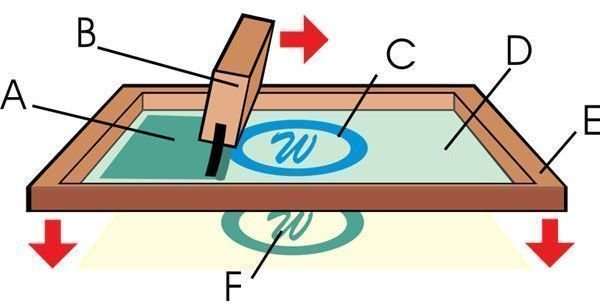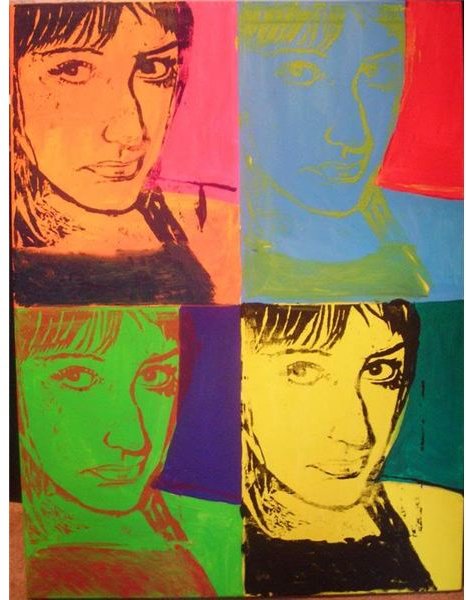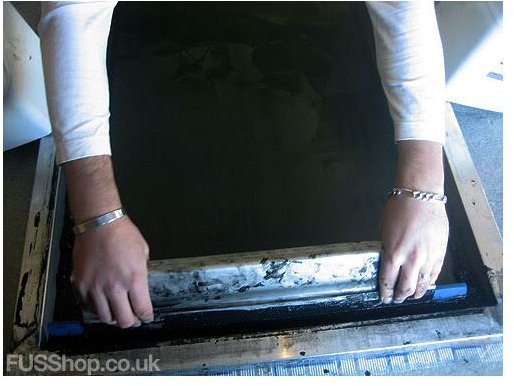A Brief History of Screen Printing: From Ancient China to the Modern Day
Screen Printing History - Where Did It All Begin?
The history of silk screen printing can be dated back to the Song dynasty period of around 1000 years ago in China, although the exact details are a little hazy. China and other Asian countries such as Japan took hold of the idea to use silk as a mesh, with the inclusion of block printing, and advanced the process for many years.
Due to the scarcity and expense of silk in the rest of the world though, screen printing took a while to find its feet, until more readily available silk mesh was available in the 1700s, and interest in Western Europe began to get established.
Screen Printing Through the Ages - The Formative Years
Perhaps the most important historical development of the screen printing process was made in the late 1880s in both America and the UK, using similar principles but going by different names. This took the process of screen printing further, by using wax paper handwriting stencils patented in 1877, but were then fixed into a frame, so that the ink could then be forced through them by using a rubber squeegee. The use of a frame with these delicate stencils was called the Cyclostyle in the UK, and the Mimeograph in the USA, and used a fine and porous waxed paper called Yoshino.

Although a successful idea, the handwriting stencils themselves were extremely delicate, so much so that they had to be sandwiched between a sheet of muslin and a gauze to protect them, but still make them usable. By 1890 the UK’s Cyclostyle, invented by David Gestetner, was now in use under the name of the Neo Cyclostyle, this time supplied with a hinged silk covered frame allowing the stencil to be supported as the ink was roller-printed through it—much the same as we are familiar with today.
It wasn’t until 1907 in Manchester, England, that the first patent for the screen printing process was granted though. Samuel Simon’s patented process used a screen using “chiffon” rather than the original silk, and the use of what he called “knotting” (shellac) to block out the relevant areas. And it is here, where screen printing really takes off in terms of popularity.
Golden Age of Screen Printing
Screen printing became so popular in the early 20th century, and so competitive, that Western screen printers became extremely

protective and guarded about their screen printing methods. This period of history is when the screen printing process was being used for printing expensive wallpaper, so still very much the domain of the privileged minority. Screenprinters’ workshops became very secretive places to be, guarding their knowledge and techniques closely.
In 1918 the commercial process called “Selectasine”, was patented in the USA, furthering the screen printing process further by allowing all colors to be printed using the same screen. This was achieved by progressing from pale to dark colors, systematically blocking out more and more of the mesh each time.
Artists began to take note of screen printing for reproducing fine art prints, around 1932, and in 1940 American artists renamed this process serigraphy (silk drawing). It became widely popular with artists from this period, and continues today.
Uses of Screen Printing Today

The most iconic image of modern times that utilized the screen printing process was Andy Warhol’s Marilyn Monroe piece (similar in style to the one pictured here). Andy Warhol was extremely influential in the popularity of the screen printing process with artists of today.
Although the history of screen printing started out over a thousand years ago, and has undergone many changes, the essential idea remains the same and is still popular. Rather than when the process was used for producing expensive wallpaper though, today’s process is used more commonly on posters, ceramics and T-shirts. In fact the business of screen printing onto garments is so popular, it accounts for over half the screen printing done in the US today.
References
-
Silk screen T-shirt - meul/wikimedia
-
Squeegeeville, http://www.squeegeeville.com/pdfs/book_selecta_en2.pdf
-
History of Silk Screen Printing,Colorific, http://colourific.com.au/history.htm
-
Warhol style artwork - nymphodora/Photobucket
Unless otherwise stated, images released under CC 3.0
-
Silk Screen Printing, Printmaker, http://www.printmaker.co.uk/sprnt.html
-
Screen printing in action - FUSShop/photobucket
-
Screen printing diagram - Harry Wad/wikimedia under CC 2.5
